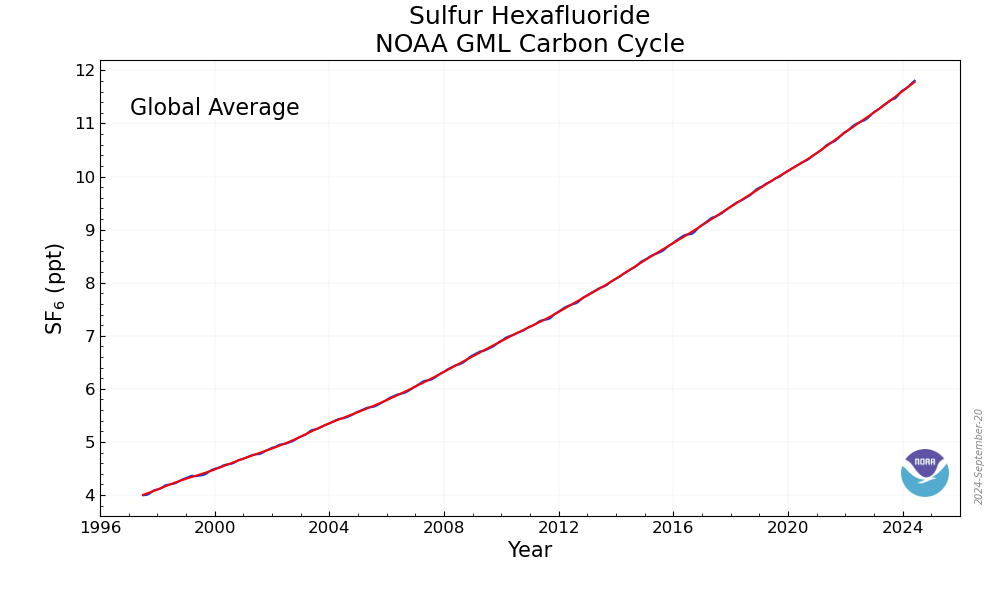GGGRN Data
The Global Greenhouse Gas Reference Network measures the atmospheric distribution and trends of the three main long-term drivers of climate change, carbon dioxide (CO2), methane (CH4), and nitrous oxide (N2O), as well as as sulfur hexafluoride (SF6) which is a very long-lived man-made greenhouse gas and carbon monoxide (CO) which is an important indicator of air pollution.
The Reference Network measurement program includes continuous in-situ measurements at the NOAA 4 Atmospheric Baseline Observatories (global background sites) and 8 tall towers, as well as flask-air samples collected at over 50 regional background sites, and in vertical profiles from small aircraft. The network measurements are reported on internationally recognized calibration scales and go through rigorous quality assurance and quality control.
The measurements of the Global Greenhouse Gas Reference Network represent the longest on-going calibrated record of global GHG atmospheric levels. The GGGRN background air measurements are used to track year-to-year changes and long-term trends in GHG levels. Documenting GHG global trends reliably is important to quantify their impact on the earth's radiative budget and climate. The measurements serve as a comparison with measurements made by many other international laboratories, and with regional studies. They are widely used in studies inferring space-time patterns of emissions and removals of greenhouse gases that are optimally consistent with the atmospheric observations.
Additional data is also available from the Trends pages.






